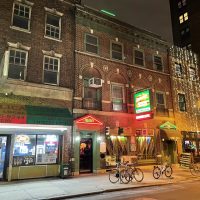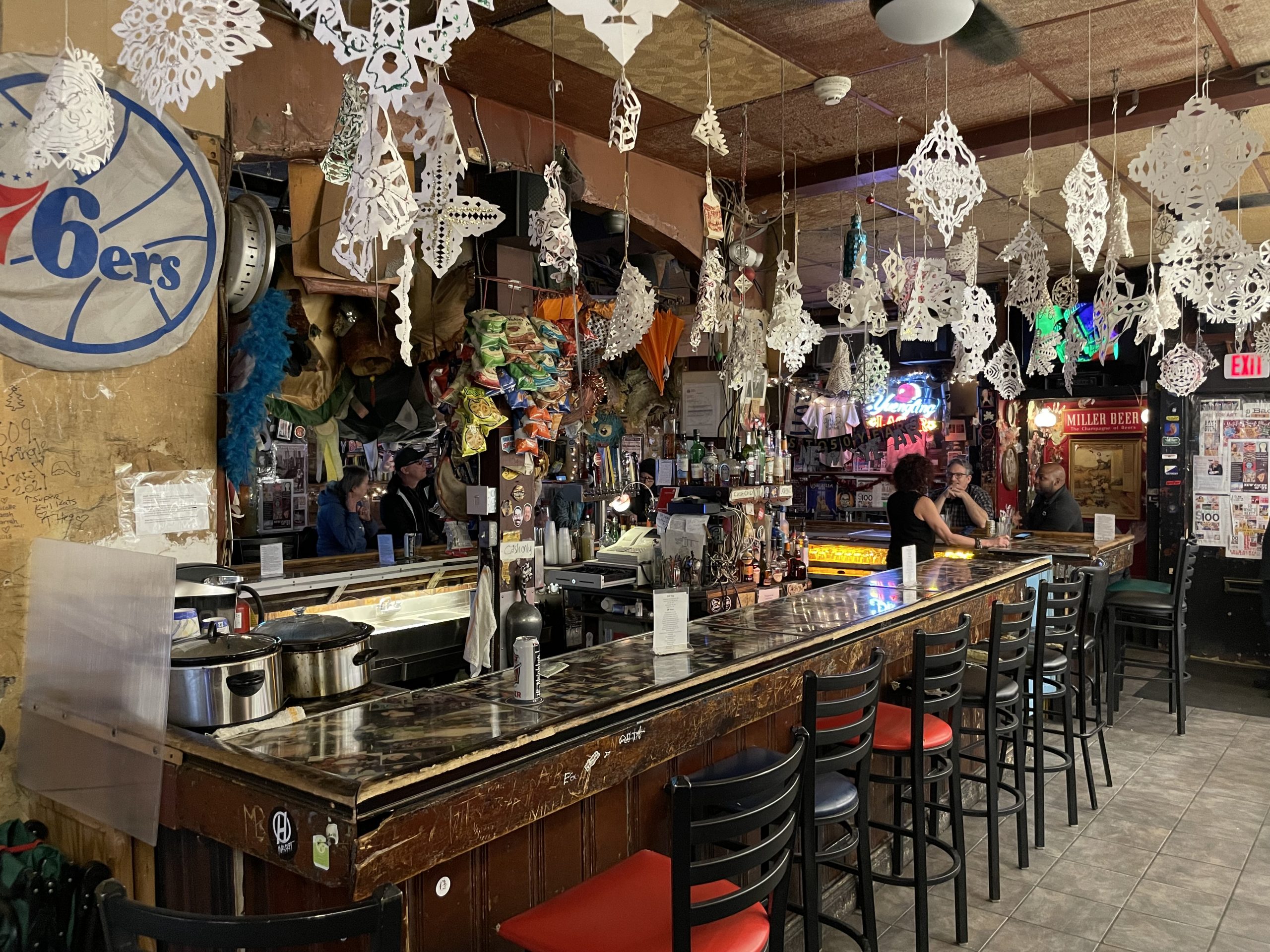McGlinchey’s Bar
Philadelphia, Pennsylvania

Field Rating
7
out of 10
Prepare a change of clothes and soak in the atmosphere.
The Basics
259 S 15th StPhiladelphia, PA 19102
Connect
Official Site
In Short
Field Note
Philadelphia’s Center City dive bar inventory is well stocked, a number of timeless institutions well distributed throughout the core of the city. On a one-time visit, McGlinchey’s Bar may not rise above the label of “the smoking bar,” but the history here runs deep, the building dating back to 1922 and many of the bar’s elements decades old.
The smoking reputation is accurate, of course, McGlinchey’s Bar allowed to host city smokers thanks to a quirk in Philadelphia’s smoking ban that allows bars with little reliance on food for income to operate under an exemption. To satisfy the requirement that food be offered without tipping into enough revenue to trigger the smoking ban’s enforcement, the menu here is slender and centered around notoriously inexpensive hot dogs.
But the story underneath the hot dog and smoking-allowed headline is a compelling one, dating back to 1937 with the building was sold to a man with the surname McGlinchey, first name not revealed by the few sources that have dared to recount the history of the Philadelphia dive bar. McGlinchey’s first foray into business involved setting up shop on the second floor of the building that today houses the bar, operating a restaurant as late as 1949. At some point during the 1950s, the business moved to the first floor and reimagined itself as a bar, taking over a space occupied by a business named The Odd Shop, a bookstore and curio store.
...the Philadelphia rumor mill perpetually the source of suggestion that Henry Sokol included in his will a provision that drink prices not be raised more than 15 cents.
Henry Sokol purchased the building and the business inside it in 1968 and though Henry passed away in 1985, his sons Ronnie and Shelley (who were in attendance when their father signed the deal that purchased the building) now own and operate McGlinchey’s Bar. During the Sokol family’s ownership of McGlinchey’s Bar, little has changed, the Philadelphia rumor mill perpetually the source of suggestion that Henry Sokol included in his will a provision that drink prices not be raised more than 15 cents a year. The assertion is of course unconfirmed and probably legally dubious, but the whispers remain, adding to the lore of the Philadelphia dive bar. The Sokol family also owns and operates Tops Bar, a similarly smoking-friendly bar that occupies the floor above McGlinchey’s that was once a disco.
Perhaps the chief example of preservation inside McGlinchey’s Bar is the well-faded mural that lines one of the bar’s interior walls depicting a man hunting. When food was a bigger part of the McGlinchey’s experience, city workers would often stop by on their lunch break. Many of those workers came from a single company, the Atlantic-Richfield Company (you may know them as Arco), a company that at one point commissioned an ad campaign targeted at urban workers depicting country scenes with the purpose of inspiring gas-fueled trips to experience rural serenity.
The duck-laden mural seen within McGlinchey’s Bar is a remnant of that marketing campaign, gifted by the Atlantic-Richfield employees who frequented the bar. The intent of the piece was no different than a billboard today, a temporary piece meant to last a handful of months. Decades later, the artwork exists in a state too far gone for a true restoration, a piece of Philadelphia dive bar history that will at some point disintegrate entirely. The image seen inside McGlinchey’s Bar today is more a rough representation of the original artwork painted over and augmented. A second mural at one point adorned the opposite wall within McGlinchey’s before submitting to time.
Regulars with favorite seats command much of the space, a stable of drinkers so deep that at one point it inspired a photo series aptly named The Regulars.
Despite the colorful stained-glass windows up front, McGlinchey’s Bar is about as dim as a dive bar can be, locals huddling around a horseshoe bar counter in the center of a space with booth seating available along each of the bar’s long walls. Though McGlinchey’s bartenders have long had a reputation for a bit of surliness, the characterization is highly dependent on the time, vibe and individual employee, no different than any other business. Regulars with favorite seats command much of the space, a stable of drinkers so deep that at one point it inspired a photo series aptly named The Regulars.
There have been changes over the years, of course, the original jukebox (that once had its own Facebook page) replaced by a digital model. And though the bathroom has been left to its divey devices, a small furor erupted when the old school rotating, single towel-style hand drying station was replaced with a basic paper towel dispenser. Rest assured though that the graffiti and dive bar scrawlings that surround the tight space have been left intact.
Some of the bar’s best features are either hidden (a dumbwaiter said to exist behind one of the bar’s mirrors) or easily overlooked, like the cocktail-table style Ms. Pac-Man game that sits at the front of the McGlinchey’s Bar space. That dynamic of overlooked gems is a good analogy for McGlinchey’s itself, a Philadelphia dive bar bursting with a history sometimes overshadowed by the low lighting and cigarette smoke in the air.
Related Reviews
Oscar's Tavern
Red brick, white trim, cheesesteaks.
Dirty Frank's
Famous Franks mural dive.
Locust Bar
Wings & beer corner stop.











